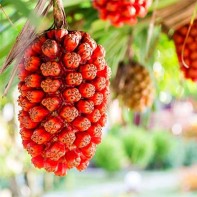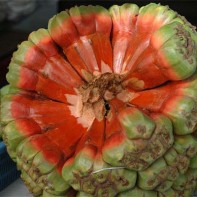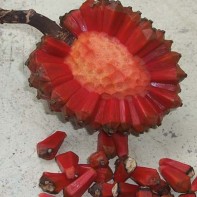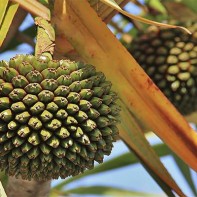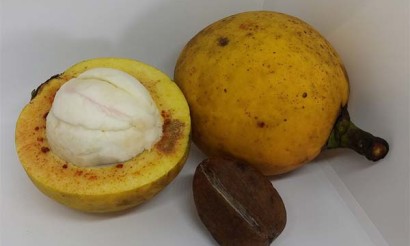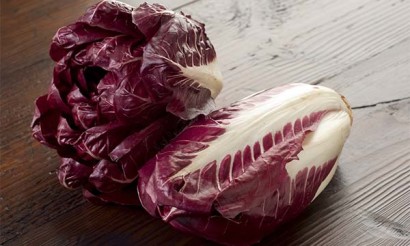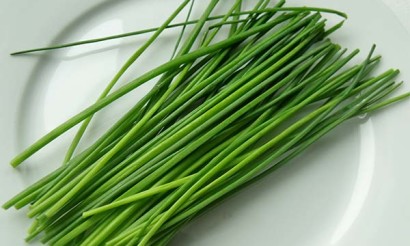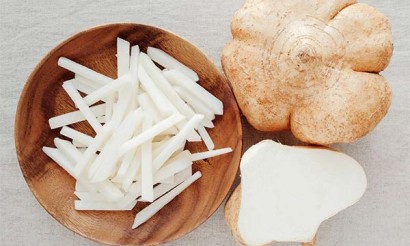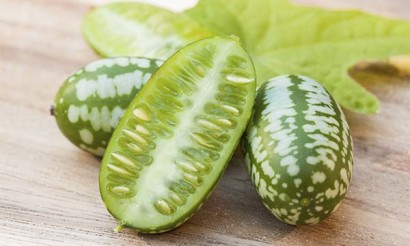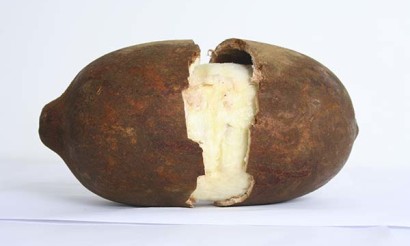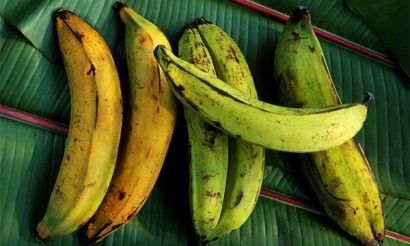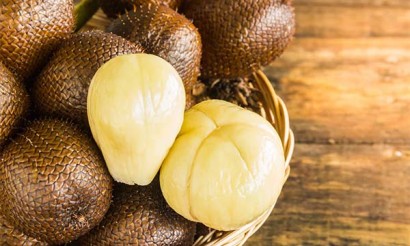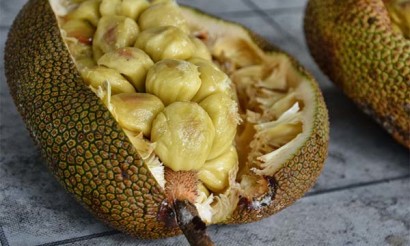Pandan: what is this fruit and why is it useful?
Some fruits of tropical countries do not have a long shelf life, so the inhabitants of the northern latitudes have almost no opportunity to enjoy them or use them as a medicine, cosmetics. Basically, pandan is one of these exotics. It is only possible to taste it fresh during a tourist trip to Southeast Asia. But, still today there is an opportunity to buy through online stores dried parts of the plant, extracts, oil and tea, which have a unique flavor and a lot of useful substances.
What is the fruit
The tropical pandanus plant gives very tasty and useful fruits, which are very popular in Asian countries. There are more than 700 species of the fruit tree, not all of which are suitable for food. But those fruits that can be eaten, have an unusual taste and aroma, similar to the smell of rose oil, sandalwood, jasmine or musk. It all depends on the variety of the plant. The flesh of the pandanus tastes pleasant, sweet, with a slight sourness. It is consumed fresh and for cooking various dishes.
What it looks like
The pandanus tree bears a strong resemblance to a palm tree. It has a short, strong trunk and a lush, spreading crown among which ripen red-orange, very attractive-looking fruits. The elongated leaves with prickly edges give the plant even more lushness. It blooms in small and large inflorescences of bright yellow bell-shaped flowers. It is the large flowers that are the female flowers. When flowering, the tree emits a superb fruity fragrance.
When ripe, the fruits are spherical or somewhat oblong in shape and take on a beautiful, bright color - red or purple. In rare cases, they may even have a bluish hue. From afar, the orange-red fruits on the palm are mistaken for pineapple. On average they have a diameter of 25-30 cm. The fruit is a core surrounded by numerous elongated segments. Their number can reach 200 pieces.
Where it grows
A perennial, arboreal plant native to tropical climates of the eastern hemisphere. In its wild form it is widely distributed in Australia, India, Africa and Madagascar. Pandanus can also be found in the Pacific Islands, Thailand and Vietnam. Today the plant is cultivated in other countries for home cultivation or ornamental purposes. Of course, the tropical palm will not bloom and bear fruit at home.
Although the tree is a heat-loving, it is unpretentious to the soil. It can grow on seashores, in swamps and rivers, in forests and coral reefs, as well as on the slopes of volcanoes.
What is the pandanus fruit good for?
The composition of pandanus is truly unique. Vitamins A, B, C, D, trace elements, amino acids, alkaloids, fiber and other beneficial components for human health are gathered here in a balanced way. There is an incredible amount of vitamin C in the fruit, which allows you to claim great benefits for the body's immune system. Using pandanus as a food allows:

- Deal more easily with infectious and viral diseases.
- Fight cancer cells.
- Relieve pain and improve well-being in women during their critical days.
- Increase libido when used as a powerful aphrodisiac.
- Have a beneficial effect on fetal development during pregnancy.
- Normalize the mental state, getting rid of unnecessary anxiety, stress.
- Relieve headaches and migraines.
- Relax the brain during hard mental work.
- Increase vitality.
- Speed up the metabolic processes in the body.
- Improve the function of the digestive organs.
- Increase blood circulation.
- Reduce the risk of heart disease.
- Eliminate excess fluid from the body.
- Normalize blood pressure.
Thus, pandanus fruits have a positive effect on all important human organs and organ systems. Cardiovascular activity, digestive and urogenital systems, immunity, as well as the work of the CNS are improved. Tonic effect has a tonic effect of the seed oil, and soothing and mucolytic - tea from the flowers. Also a pleasant and fragrant drink helps to relax the nerves and rest after a hard day's work.
In traditional Asian medicine, the plant is widely used to relieve arthritis pain, for which they use coconut oil together with the infusion of pandanus leaves. It is the latter here has an anti-inflammatory effect. The leaves can be used to improve oral hygiene - simply chew them. However, the same method can cope with bleeding gums. Pandanus tea has been proven to control blood sugar levels.
What harm can it do
Like any other fruit, pandan, for all its usefulness, in some cases can bring harm to the human body. If there is an individual sensitivity to the components, then the use of the fruit can provoke allergic reactions - itching of the skin, rash, nausea, redness. Therefore, people who are prone to allergies should taste the tropical delicacy very carefully.
Although the unique composition of fruit, especially folic acid, is very useful for the intrauterine development of the unborn child, it is not recommended for pregnant women to eat pandan. Only local residents of growing countries can consume it without fear for the child. But for others, the fruit is exotic, so during pregnancy you should refrain from trying such a delicacy. The same applies to nursing mothers. The tropical fruit should not be eaten in large quantities, otherwise it will cause digestive upset.
When you try a small amount of pandan for the first time, it is better to stop and listen to your own body - how the new food is digested. If digestive upset occurred, then you can conclude about the lack of enzymes necessary for the digestion of exotics.
How to eat the pandanus fruit correctly
Use in food pandan in fresh or boiled form. Previously it is disassembled into parts, tearing from the core of the pulp segments. In this form, the fruit can be eaten. In its fresh state the fruit is saturated with coarse fiber, so people with a "weak" stomach will be suffering indigestion. It is better to subject the fruit to cooking, as discussed below.
What you can make with pandanus
Pandanus is a non-waste product - not only the fruit, but also leaves, inflorescences, rhizomes are used for food and medicinal purposes. They are dried and put into storage and used as needed. Since the fruits have a very short shelf life, they are only used fresh in their countries of origin. But dried seeds, flowers, leaves, and these frozen parts of the plant are sold in specialty stores around the world. In this form, they retain a lot of useful properties, an extraordinary aroma and exquisite taste. Therefore, true chefs widely use pandanus preparations for cooking various dishes, giving them a bright flavor.
From the useful fruit is prepared not only fragrant tea, juice or vitamin drinks. From the pulp make a delicious mashed potatoes, baked cakes, it is added to confectionery products. They make fragrant spices and delicious desserts from pandanus. Thus, the inhabitants of the Pacific Islands widely use all parts of the fruit tree - fruits, leaves, seeds, roots for cooking both first and second dishes. To decorate various culinary delights, they are wrapped in pandanus leaves. The same method is suitable for baking, steaming or grilling meat, poultry and fish, which gives them a wonderful, rich aroma and tangy taste.
Fruit delicacies such as marmalade and pasta are also prepared from the pulp. In some Asian countries, the fruit is a staple in the diet. Pandanus is excellent for making both sweet and savory dishes.
Traditional Medicine Applications
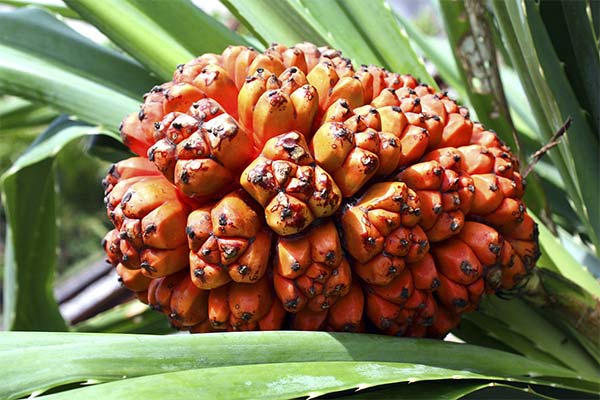
Since the exotic fruit has antipyretic, analgesic, mucolytic action, it is widely used in folk medicine. Pastes, teas, infusions and decoctions can not only quench pain, relieve fever, but also restore strength and vitality after a long illness.
Exotic oil is also used as a wound healer. Cough decoctions help to cure coughs, and tincture of flowers is used to treat skin diseases. When you have skin problems and frequent rashes, pandanus oil helps. It also has a pronounced relaxing effect - just add a few drops to your bath to relieve fatigue after a hard day's work and relax completely.
Pandanus leaves are often used by shamans in Africa to make a medicinal remedy for animals. For colds, flu, constipation or boils, the tropical fruit is indispensable in Ayurvedic practice. It also helps in case of sunburns, when you need to relieve burning of the skin. Decoction of the leaves is suitable for this purpose.
In the practice of Oriental medicine, it is proved that if you eat half a fruit every day, you can greatly improve memory, cope with stress and get rid of insomnia. A daily allowance of exotics is indispensable for the normal functioning of the nervous system.
Cosmetic applications
Pandanus oil is widely used for cosmetic purposes. It is enough to add it to the cream when applied to the face and neck to make the skin fresh, smooth and silky. This is what women in Asian countries do. Pandanus leaves are also widely used as a component of cosmetic products. They contain antioxidants and other beneficial substances for the skin, which allows the successful treatment of acne, acne, pimples. Thanks to the amazing composition, regular use of the green part of the plants prevents aging of the skin, making it young and healthy. Dead cells are instantly removed and the epidermis is restored.
Use pandanus leaves and to narrow pores, which is especially important for oily, porous skin. Home masks with the addition of this ingredient can fight dark circles under the eyes, wrinkles. Use the leaf mass for the production of creams, gels, lotions for cleansing, brightening, restoration, nourishing face and neck skin. And no wonder, because the leaves of the tropical fruit contain many vitamins and minerals.
How to grow pandanus
It is quite possible to grow pandanus at home for decorative purposes. To do this, it is better to buy a sprout or a small seedling of the tropical palm. It is not recommended to transplant it immediately - it is necessary to give time to acclimatize in new conditions. One week later, you can start transplanting the young palm. After purchase and then - every 2-3 years it is better to do it in early spring. Completely braided roots indicate the need to replant the flower in a larger pot. Under no circumstances should the seedling be placed immediately in a large container - so the plant will die.
On the leaves of the pandanus there are prickly thorns, so before transplanting the ground part should be carefully tied with a bundle. Then the green mass will not be damaged, and the hands will remain intact, without injury. The root system of the pandanus should not be buried. The roots should be visible on the ground surface. Thus, the palm grows in natural conditions. The plant is a light-loving, so place the pot in a bright place with diffused sunlight. But, direct sunlight is not allowed here.
Since pandanus is also a heat-loving plant, the optimal growing temperature is 20-25 degrees Celsius. Even in winter, it should not fall below 16 degrees Celsius. Watering is carried out with warm water every 2-3 days. Additionally, the palm is irrigated with a sprayer. In a couple of years with optimal care, the pandan will reach a height of 3 meters.
«Important: All information on this site is provided for informational purposes only. purposes. Before applying any recommendations, please consult with a specialist. specialist. Neither the editors nor the authors shall be liable for any possible harm caused by materials."

